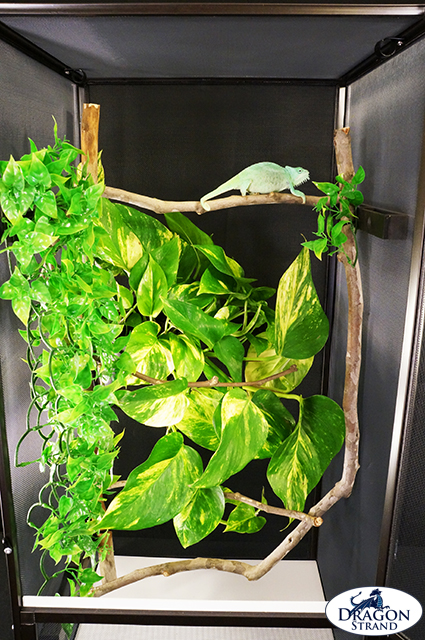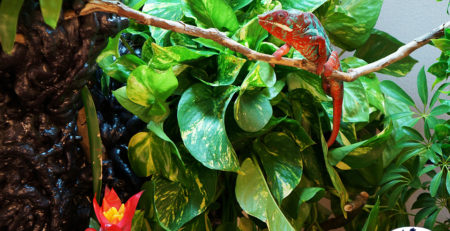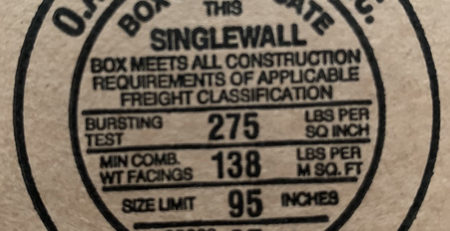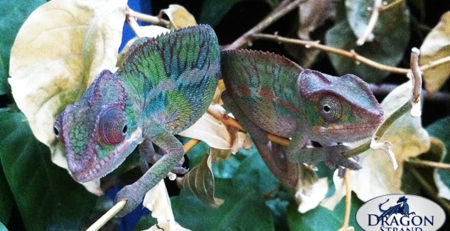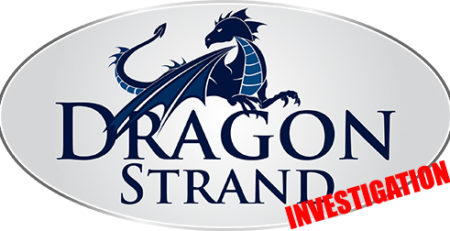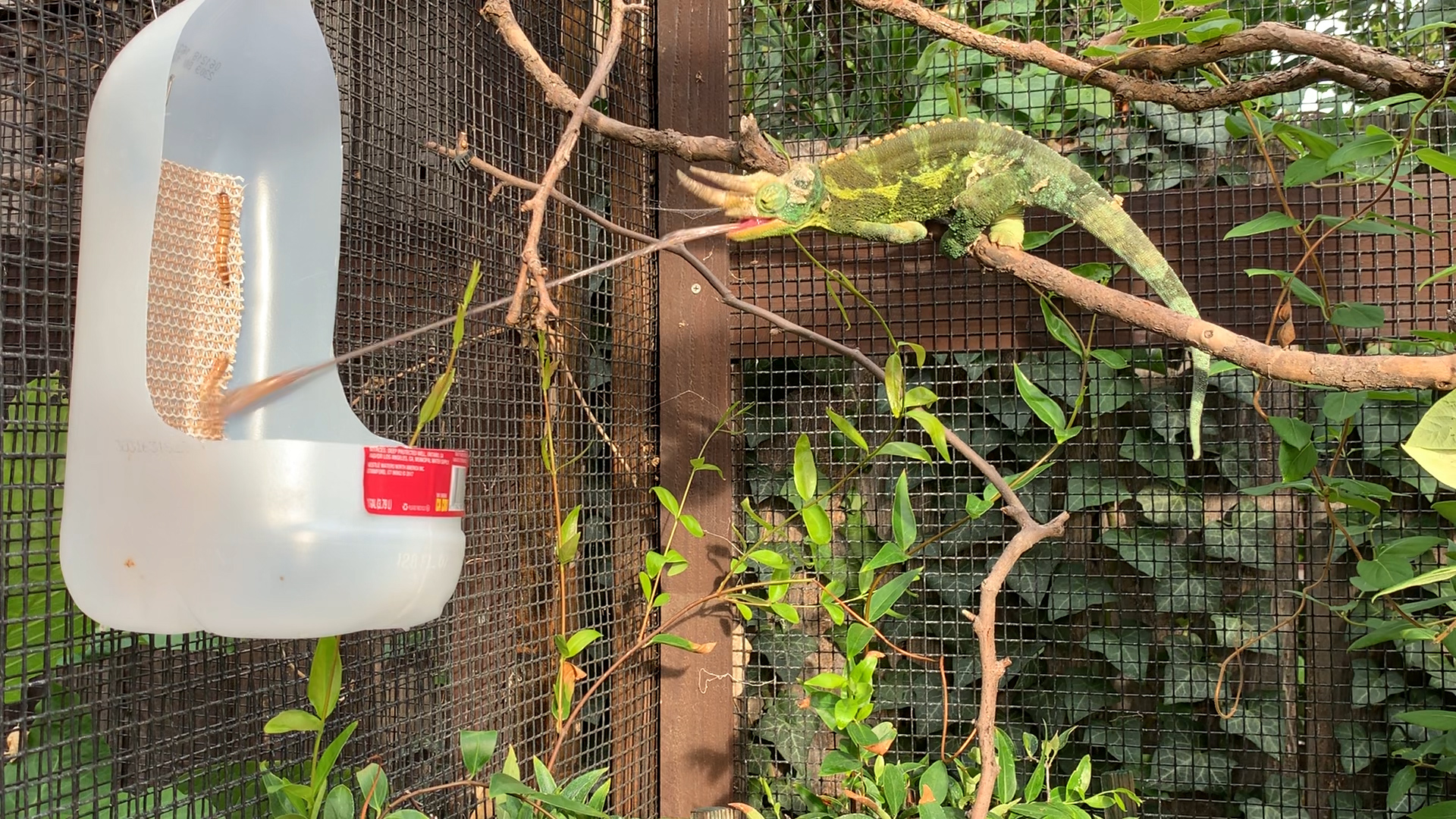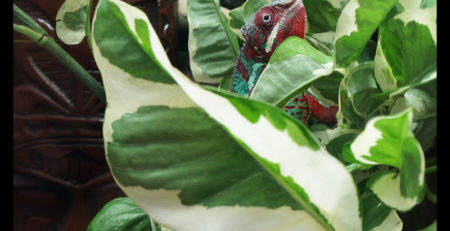Screen Cage Selection Guide for the Chameleon Keeper
Selecting a Screen Cage for a Chameleon
As with any product category, when multiple companies offer roughly the same product it can be hard to tell which way to go. Eventually, the consumer goes with price as there is no comprehensive way to put all the cage feature lists together. I will provide that service in this article. Of course, I am biased as I run a caging company, but I also began that company because none of the cages offered were designed by chameleon people and each had a different set of advantages. So I changed that and started Dragon Strand where I can ensure that our community has a quality option – with all the advantages in one product. Other companies have got the cheap-as-possible angle so now, with Dragon strand, you have the quality priority contender as well. This means the community has a wide range of options to choose from and with this article you can make an informed decision.
A Brief History of Screen Cages
There have been a number of manufacturers of screen cages since the chameleon community figured out that they solved a number of housing problems we were encountering. As screen cages are somewhat a “nichey” business the companies came and went over the last decades.
We have since seen large scale imports coming from Chinese manufacturers. The quality left much to be desired and there were many complaints of, among other things, the screen rusting through. Since then, a number of retailers have done some design tweaks, fixed some problems, and have rebranded these cages.
In 2013 Dragon Strand was started to bring chameleon cages designed by a chameleon hobbyist to the market. Although I have used the same industry standard cage design to start off the cage line, I made it a point to remove the design flaws that we had been living with for so long in our hobby.
This is not to say the Chinese imports won’t work. They are functional and even the worst one will provide a good cage for your chameleon. There are none that I would recommend to run screaming from! If price is an issue then definitely go for the best price. You can use the chart below to see what you are or are not getting and make your decision as to how important that characteristic is to you.
In the Dragon Strand business model, I have sacrificed a lower price to bring a higher quality to our community. The lowest price point cage is already available so there is no reason for me to create another one. That is why competition is important. In his article, I will brag about what I offer, but I will also present an honest view of what is out there. The bottom line is that I am an educator for our community and I will continue to maintain that role.
Three Major Considerations For Screen Cage Brand Selection
There are 3 main considerations when selecting a screen cage for functionality and longevity.
1) Drainage Tray. The most important aspect of having a screen, or any, cage in your home is a drainage strategy. Chameleons and other arboreals need water to flow from the top to bottom whether via misters or drippers. This water needs to go somewhere. You want it out of the cage, but not on your furniture or floor. If the cage will be in a greenhouse or patio or any other area where water dripping to the floor is not an issue you are set. But if the cage is in the house, like most are, you will need something to catch the water. This is where a drainage tray comes to play. It is a tray that fits under the cage and catches all the excess water. Often evaporation takes care of the water, but with more aggressive misting schedules or humid environments, the water can be removed with a wet/dry vac or even a turkey baster. For some reason, at this time, the imports only offer substrate trays. This is a tray that goes inside the cage for people who want a moss floor or leaf litter. I offer them and enjoy creating naturalistic environments with bio-active substrates. But these are not suitable for taking the place of a drainage tray because they are inside the cage. The last thing you want to do is maintain a puddle of water at the bottom of the cage to marinate the poop. That is what a substrate tray will do. I have been amazed that the import companies wouldn’t change their offering as they cater mostly to chameleon people. Perhaps this article might inspire some changes? But as for you, the chameleon keeper, make sure you have a drainage solution. All Dragon Strand cages have appropriately designed drainage trays available. Unfortunately, since our cages have a slightly different dimensional design, my drainage trays will not fit other companies. Changing the dimensions of my trays to accommodate other cages would then increase the already high shipping cost to my customers and my first responsibility is to them.
2) Rust proof. Imported cages gave us a nasty surprise when they sent over coated metal screen cages. These eventually wore down and our screen rusted through. A number of the brands requested this fixed and were then sent aluminum screen. Although, as can be seen by the chart below, not all the companies made this necessary change. Many companies brag about using stainless steel components, but simply take a magnet to their cages and you will find that not all the other components are stainless steel or aluminum (magnets will not stick to stainless steel or aluminum). What is the point of marketing that you have a stainless steel component when the hinge pin or screws or something else is not? As of March 2015, I have been able to replace the last zinc-plated component on my cage so Dragon Strand takes the distinction to be the only cage manufacturer that can say their cage is truly rust proof. Not just some components, but all components are either stainless steel, aluminum, or plastic.
3) Door Handles. Seems so simple, but, yes, door handles are an issue for manufacturing as they increase the cost of the cage. They also complicate packing the cage for shipping as to do it right you have to make sure the handle doesn’t scratch the rest of the cage. But without a door handle, you must you’re your cage door from the top or bottom frame. This constant stress up or down can eventually bend the door frame. Not to mention, if the door is tight, constantly having to jam your finger in just to open the door is a pain. That was one of the first requirements for my design. And, yes, look for handles for both the main and service door! Dragon Strand, of course, has handles for both doors.
Screen Cage Feature Comparison Chart
This comparison was done in March 2015. All cage brands in this study were purchased within the last four months and the chart was created by personal test and inspection of those cages. It is important to note that companies eventually respond to public demand, so they may change in the future. I pride myself in pro-actively integrating the features we need for our chameleons. That is an advantage of being a chameleon keeper. I do not need my customers to get back to me with what needs to change. I am my customer and I know what we need.
Guide to Screen Cage Features
Aluminum Screen: The screening is the first component to rust. There is no excuse for offering a cage that is coated metal. If a magnet sticks to the screen of your “great deal” cage you now know why it was such a great deal. Complaints about rusting screen were common and it is unfortunate that the companies offering imported cages needed public complaints before they changed to aluminum screen. Unfortunately, since imported cages come over in case loads even a company that says they have changed their design may have a warehouse full of metal screen cages that will still be sold to you.
Door Handles: Tired of trying to open doors from the top or jamming your fingers underneath to lift up the service door? Me too. All Dragon Strand cages have door handles on both the main door and the service door.
Service Door Stops: Make sure your cage has a way to keep the service door (the bottom door that flips up for easy cleaning) held closed.
Vine Holders: These are the loops that can be installed on the top panel and have the strength to hold artificial vines. A nice touch which makes adding a vine easy.
Substrate Trays: Substrate Trays fit inside the cage and provide a basin to place a moss floor. As mentioned before, these are for creating a naturalistic environment. This is not the usual use case for a screen cage. Note for Chameleon Keepers: Companies that offer substrate trays instead of drainage trays are obviously not chameleon people. The last thing you want to do with all the water we need to run through our cages to hydrate a chameleon is mix it with chameleon poop and keep it inside the cage. I get a number of inquiries from people asking about drainage solutions for Reptibreeze, Jungle Hobbies, and DIY cages. The cage dimensions are not exact to mine so I cannot help. These companies that buy from Chinese suppliers tend to offer substrate trays. I find it curious that the people who decided to create mass-produced chameleon cages did not actually try to keep a chameleon and find out how bad of an idea this is.
Drainage Tray: Drainage Trays are the trays that fit underneath the cage. These trays allow the water to flow out of the cage for disposal in a manner appropriate to each keeper’s situation (either wet/dry vac or by user installed bulkhead for gravity drainage). As of this point in time, Dragon Strand is the only company with an appropriately sized drainage tray for the 48” tall screen cage which allows complete use of the service door.
Made in USA: Why is it important where the cage is made? In this case it is a quality issue. Dragon Strand uses the longest running USA cage manufacturing company to produce its designs. This means I can monitor quality for every ten cages produced – not by the container load from China. If there is a problem it is dealt with immediately. I know my manufacturer personally and we collaborate on effective design both for the chameleon and for shipping integrity. I know his obsessive approach to quality and that is what I need to make available the cages we chameleon keepers deserve. Made in China allows lower pricing, but there is a quality cost that comes with that. I cannot do hit and miss in this area.
100% Rust Proof: “Mostly” rust proof is acceptable in most cases. This becomes a problem only in high humidity environments. The new 100% rust free design is the reason that Dragon Strand was chosen by ChamEO chameleon rescue to re-cage their greenhouse facility. All Dragon Strand cages ordered and shipped from this point on are made completely by non-rusting components and materials. Do you live in humid environment? Come on by and check out the cages that will not rust.
This is my community. I intend for us to have the best.
Bill

